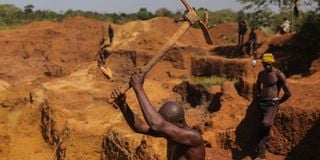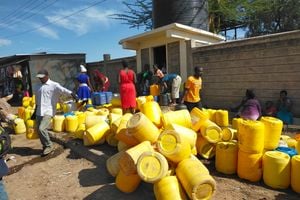
For years, both industry and households have been struggling to meet their electricity needs, and now energy-insecure companies have started importing electricity.
Mining firms in the Democratic Republic of Congo have been forced to import electricity from as far as Kenya and Ethiopia amid a biting supply, ironic for a country that would potentially power most of Africa were its hydropower capacity harnessed.
Yet electricity supply in the DRC has been a real headache for years, with the mining sector experiencing a deficit of between 500MW-1,000MW, according to figures from the Chamber of Mines, a body of the Congo Business Federation (FEC).
For years, both industry and households have been struggling to meet their electricity needs, and now energy-insecure companies have started importing electricity or use other sources of energy to keep production going.
This week, the main mining firm Gécamines, its subsidiaries and the national electricity company Societe Nationale d'Electricite (SNEL) held a working framework to “create a synergy of forces and intelligence” on how to deal with the problem. They said that would help reflect “appropriate solutions to respond to a structural problem that is undermining two sectors of economic growth in the Democratic Republic of Congo.”
In addition to the limited production of electricity, the mining industry is still hampered by another problem: frequent power cuts.
Placide Nkala, managing director of Gécamines, says mining companies whose source of electricity is SNEL experience around 20 power cuts every month.
“As you know, energy supply is crucial to the smooth running of our mining operations. At our previous meeting on May 28, 2024 in Lubumbashi, we identified the frequent power cuts and the limited power allocated to mining companies as major obstacles to our productivity. Not only do these interruptions slow down our production, they also damage some of our strategic equipment, increasing our costs and margins," he said.
SNEL managing director Fabrice Lusinde said that the energy supply deficit was structural, blaming it on the overall infrastructure problems.
“We have a structural deficit, so production is lower than demand. So, particularly today, mining operators, especially those that are subsidiaries of Gécamines, need to be reassured about their future prospects. They are all involved in programmes to increase production capacity, and want to know whether SNEL will provide them with concrete answers to their energy supply needs. Energy is an essential input. Without energy, you can't run machinery and you can't produce,” he said.
Importing power
Faced with a glaring shortage of electricity, the DRC is now importing power from other countries.
Teddy Lwamba, the Minister for Water Resources and Electricity, said the imports will cost $8 billion in the long run.
Officials say more solutions are in the pipeline, such as the operationalisation of the Buhandahanda substation in Goma,and the Nelsap line connecting to Kenya and Ethiopia, to supply 50MW-100MW from Ethiopia. Kinshasa also reached out to Brazzaville for a 25MW backup supply.
Tanzania has pledged to supply 100MW.
“Even the Central African Republic is giving us around 2MW,” minister Lwamba said, adding that there are also plans to import from Angola.
The DRC's dependence on imported electricity is a new development for a country that used to export electricity thanks to the Inga power station, which has a potential of around 40,000MW. Inga, which the African Union and the African Development Bank have always said is one of their priorities, requires more than $10 billion to reach its full potential.
Due to a lack of funding, the Inga power station currently has an installed capacity of 1,775MW. According to statistics provided in July this year by the Minister for Water Resources and Electricity, the country’s consumption is 2,100MW.
Less than 10 percent of the Congolese population people has access to electricity.
In terms of its potential, DR Congo ranks top in Africa, holding 13 percent of the world's potential in hydropower, mostly from the Congo River.
After the dream of reviving the Inga dam project to bring electricity to many countries on the continent started fading, Kinshasa is now falling back on relatively modest and less costly projects to supply the mining sector, whose demand is increasingly.
The sector has grown by 15.4 percent, contributing about 70 percent of GDP in 2023. According to experts in the sector, the mining sector is growing at an annual rate of over 13 percent. This means that demand for electricity increases every year.
Kibali Gold Mines, for instance, uses an old power station as well as industrial generators for its electricity needs. An official there told The EastAfrican that the firm has invested in a solar farm that could produce 10MW for its operations.
some mining firms have adjusted to self-reliance. For instance, Sicomines, based in southern Congo, has since 2021 relied on its own power station with four turbines, each producing 60MW.


